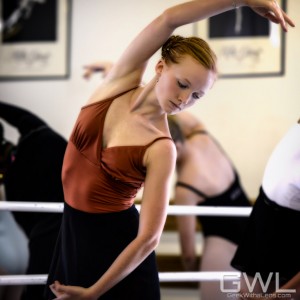As instructors, we hear this question over and over again from parents and students. Starting pointe is such a big milestone in a dancer’s life. Dancing on your toes requires tremendous strength of the legs and feet and it can be very dangerous. Please understand that we as dance teachers have your child’s best interests and well-being at heart. We do not withhold pointe shoes as a punishment. While pointe shoes are a privilege, there is a real possibility of damage from putting a dancer en pointe before they are physically ready to do so. Please trust our professional opinion and know that when your child is ready, it is our honor to tell them they are ready to take the next step in their dance training with the addition of pointe shoes to their repertoire. Here are some things we look for from your dancer:
You are at least 10 years old. The proper age to start pointe is controversial and it can be very damaging if this work is started before the growth of the foot is complete. Keep in mind that many issues and injuries can occur if a child begins pointe work too early and these factors go down significantly the longer you wait. Waiting is not bad!
You have proper body alignment. Body placement is essential which means that the upper body should be over the hips, the tailbone should be dropped and the lower back lengthened and the abdominal muscles must be fully engaged the entire time a dancer dances.
You are turned out at the hip using your rotator muscles. If a dancer does a relevé and their heels slip backward, they are not using their muscles properly.
You must have leg strength. The knees should stay absolutely straight in relevés, tendus and piqués. The dancer should also be able to balance on both feet and one foot for long periods of time.
You must have proper ankle alignment, flexibility and strength. The dancer should be able to relevé with their weight between their second and third toe with their heels naturally high off the floor and maintain that position on both feet and one foot. The dancer should be able to executing a tendu with a properly pointed foot which includes a stretch through the ankle, arch and mid-foot without curling the toes and without sickling.
You must have flexibility. Okay, so this one has little to do with pointe, but I use the promise of pointe shoes as a motivator since it is important to your overall success as a dancer to be flexible. All dancers at my studio who have pointe shoes must have both splits completely down and straddles within a few inches from the floor.
Some Other Things: I know as a dance teacher I also consider attendance, correction and combination retention and healthy body weight in relation to height and age when looking at students to put en pointe.


I LOVE this. I actually got into an argument with a friend at the Gym because her daughter is 9 and going on pointe. She was very excited about this, but I couldn’t believe it! I’ve seen her daughter, she brings her to the Gym when she doesn’t have school, and this girl is VERY floppy and has ZERO control. I can’ t imagine a teacher thinking she is OK for this already. HUGE red flag for that studio for pushing this so early.
I wish more people thought the way you do! Several years ago, we didn’t know the things we know now about bone and muscle development. Now we do. I went en pointe myself at a young age, only 8, but I was also taking 3 hours of ballet every single day. I still could have afforded to wait and I’m very lucky that I didn’t have any damage done to my feet. Thanks for reading my article!
Yes! Waiting is not bad. I have a student that had to wait a whole year while all the others in her group had already gone on pointe. It was heartbreaking to make her wait. But so worth it! She was constantly in “pelvic retreat” and she wasn’t lengthening through her entire legs. Over the summer she settled into her body, just before getting ready to settle into her first year of high school (she is very tall and had a big growth spurt the year before). Now, she is long, beautiful and well aligned. With straight knees.
Making a student wait, or being that student that has to wait may seem painful and neverending. Keep working hard and keep your eyes on the prize (for teachers too. The success of their students is a prize!).
Great list of priorities and requirements for pointe! I like the flexibility “carrot” 🙂
Thanks for reading my article! Yes, I think too often parents and young dancers think we are punishing kids by not letting them en pointe, but we really are looking out for their interests and just want to see them be safe and be successful. Sounds like waiting paid off for your young dancer, as it does for many others. I do feel a bit badly about making them get their splits since once they get the shoes, they aren’t sure whether they want them anymore, but I guess it’s all for their own good! 🙂
Thank you, I’m so glad you liked it!
Pingback: When Is My Child Ready For Pointe Shoes? | The Woodbridge School of Dance Blog
Thanks so much! I hope this helps your young dancers and I would love to hear from them and you!